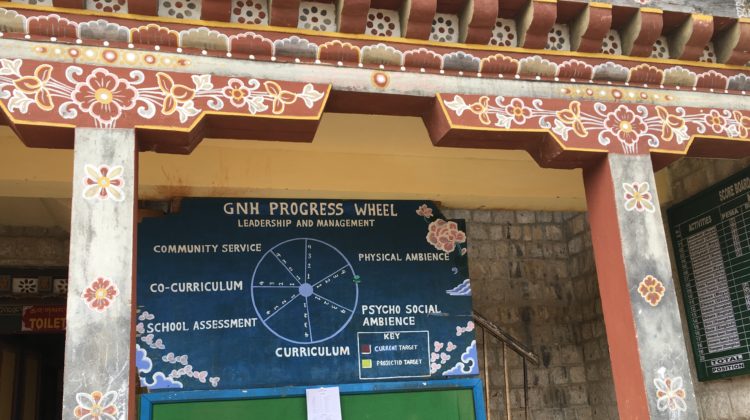New Zealand made international news recently with its plan to introduce a “wellbeing budget.” Based on the notion that people’s wellbeing rests on much more than just economic growth, New Zealand’s new budget will frame public spending around addressing mental health challenges, reducing child poverty and family violence, transitioning to a low-emissions economy, expanding the opportunities for indigenous peoples, and supporting a thriving nation in the digital age. According to Jacinda Ardern, New Zealand’s Prime Minister, “We’re embedding that notion of making decisions that aren’t just about growth for growth’s sake, but how are our people faring?”
“We’re embedding that notion of making decisions that aren’t just about growth for growth’s sake, but how are our people faring?”
– Jacinda Ardern, New Zealand’s Prime Minister
New Zealand’s budget represents an important step in implementing a government planning tool centred on people’s wellbeing. For Bhutan watchers, it’s also rather familiar. While New Zealand’s budget initiative received well deserved international fanfare, over the past 10 years Bhutan has been quietly developing and using its own series of policy instruments that put wellbeing at the forefront of public policy and planning. Bhutan’s national development approach, known as Gross National Happiness (GNH), incorporates multiple social, cultural, ecological, economic and governance dimensions of wellbeing. The GNH framework includes a number of policy tools as well. Perhaps most well-known is the Gross National Happiness Index (GNHI). The GNHI measures policy outcomes not just in terms of their contribution to GDP and economic growth, but how they impact nine wellbeing ‘domains’ of GNH. These domains range from people’s psychological wellbeing to cultural resilience to time use. The result: a measurement tool that provides a much broader and deeper understanding of people’s happiness and wellbeing, and the policies that help promote or hinder them.
The GNHI might be the most well-known wellbeing policy instrument in Bhutan, but the country has developed several other unique policy tools as well. For example, the GNH policy screening tool represents an interesting experiment that requires a proposed policy to be successfully assessed against the nine wellbeing domains of GNH before it can be introduced to parliament. What does that mean? Suppose the government of Bhutan wanted to introduce a policy on mining. The GNH screening tool would assess the mining policy for its potential economic effects. It would also move much further. The screening tool would require answers to questions such as how will the proposed mining policy affect local culture? What will be its impact on the ability of people to spend time with their families? Will the policy have negative ecological effects? Will it increase levels of stress in the population? What impacts will it have on people’s ability to spend time in spiritual pursuits? If a proposed policy leads to negative consequences on these kinds of issues, it cannot proceed to parliament for a vote. Ultimately, the screening tool ensures that policies consider the full range of human wellbeing beyond economics and in areas one might not immediately associate with the specific policy.
Bhutan’s most recent tool extends its GNH focus beyond government policy and into the private sector. While still a proposal that has not yet been implemented, the GNH of Business tool represents an exciting advance in bringing wellbeing into the private sector. Similar to the GNH policy screening tool, the GNH of Business tool will enable businesses to evaluate their operations against the nine wellbeing domains of GNH. Doing so will move Bhutan’s business model beyond the corporate world’s common overemphasis on shareholder value and profit to better incorporate ecological, cultural and community concerns.
Ultimately, countries like Bhutan and New Zealand are demonstrating to the world that there is a better, more sustainable way to approach both public policy and the business world. New Zealand’s wellbeing budget and Bhutan’s GNH-based suite of wellbeing policy tools illustrate that it is possible for meaningful action on people’s wellbeing to occur on a national level.







